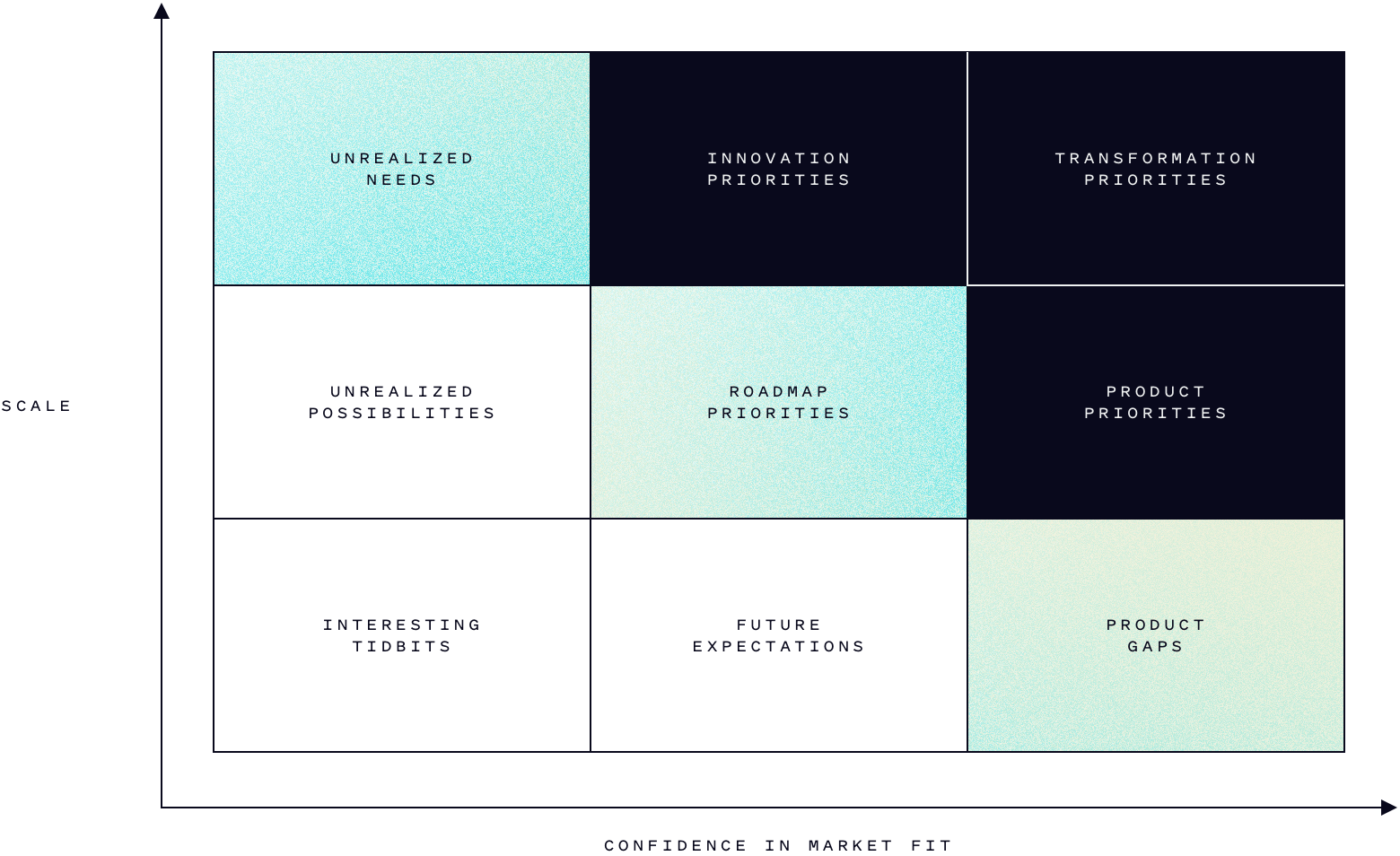
Intelligent Products
Harnessing your AI business ideas with Intelligent Product workshops
AI products have gotten an enormous public relations boost since the wide release of ChatGPT. 100 million users signed up for the service in only two months, making it the fastest growing app of all time. Global Google searches for “AI” almost doubled in December 2022 and have stayed elevated since then. Suddenly everyone is talking about what AI can do.
As we at Slalom Build have said before: “AI is an essential differentiator for early adopters, and organizations that continue to ignore AI may not survive in the marketplace long-term. Those who incorporate AI into their products can provide customer experiences and use data in ways their competitors can’t.” (from Beyond AI: how Intelligent Products drive real AI impact on business)
AI is no longer a niche project. There’s even more incentive to integrate AI technology into products and processes.
Finding opportunities for AI products together
With that impetus in mind, we recently brought together a handful of clients for an intelligent product workshop to learn more about where AI intersects with their business priorities. We focused on how applications of AI expose new business opportunities in these industries:
- Education
- Medical devices
- Pro sports
- Architecture and engineering
- Agriculture
- Semiconductors
- Software
Together, we identified areas where AI initiatives could have measurable impacts on customers, partners, and operations. We also looked at how commercial and technology teams could collaborate in lock step to ensure that sales, marketing, product, technology, and IT are aligned on creating value for their own customers. We provided a framework for thinking through our clients’ business and operational priorities and how to talk about those priorities with their peers.

The workshop was designed to help those responsible for R&D, product management, commercialization, and data monetization to identify opportunities for intelligent products across those seven industries.
5 best practices for intelligent product ideation
We came together in Mountain View, California to explore how clients could capitalize on the intersection of AI and business, with insights into breakthrough technology from Microsoft and NVIDIA. We collaborated on a half-day tailored experience with 1:1 breakout sessions, led by our experience design and machine learning leaders. What did we learn?
- Start from the business priority. It’s not rocket science—zero in on what matters to your CEO. Business priorities are clearly outlined and there is buy-in from your peers, so target those priorities and explore how your team can enable them.
- It’s not about the technology. Focus on the outcome you are trying to achieve. Whether it’s dynamic supply chain optimization or better patient outcomes, start to peel back the layers and articulate a challenge (or two) you need to address.
- What if we built an MVP? Yep, we’re going there. If we had to tackle that challenge, how would we do it? Think: people, process, technology, and commercial implications.
- Every industry is doing something different, which also means you have the freedom to try something new. You are not alone; keep the priority you are solving for top of mind—and keep going.
- Iterate and see how it plays into your long-term plans. The first try may exceed your expectations; it’s the second and third iteration that will trip you up. But with a bit of vision and an AI operating model, you can break some glass and truly innovate.
As a result, attendees are now pursuing those opportunities, including one team that is now moving forward with a data mesh strategy to drive towards an MVP that delivers better partner and patient outcomes, for example.
This event is the first of a series of Slalom Build workshops gathering technology and business executives together to share, learn, and ideate on bringing new AI intersections to life.
Modern deep learning and neural networks are opening doors that were closed before. If you can articulate your top-line and bottom-line priorities for the next 12 months, we can co-create together and impact your partner, customer, and operations with intelligent products. If you’d like to learn more, get in touch!
This is getting us thinking differently, outside of our normal language.
VP of Product, a leading medical devices company
Nima Niakan is a director at Slalom Build, driving growth for enterprise software and services companies with new product identification, revenue growth, product-market fit, technology enablement, machine learning, and go-to-market strategy. Nima is an avid cyclist, and he loves playing soccer, socializing around town, and spending time with his family.